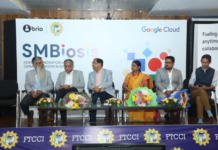Improving digital employee experience empowers employees and benefits the organization. When employees’ digital interactions make their tasks simpler, they are more satisfied and productive, which helps better support achieving business goals
This is an exclusive interview conducted by the Editor Team of CIO News with Manal Allam, IT Head & Business Partner – Middle East at Merck Group
Digital employee experience (DEX) is a reflection of how effectively people interact with their workplace digital tools, which allows them to be engaged, proficient, and productive.
Digital employee experience is becoming a progressively larger and more integral part of the overall employee experience, especially with the expansion of remote and hybrid work environment options.
Improving digital employee experience empowers employees and benefits the organization. When employees’ digital interactions make their tasks simpler, they are more satisfied and productive, which helps better support achieving business goals.
Implementing an optimal digital employee experience doesn’t happen overnight. It is a journey that the organization’s leadership must steer. Based on my humble experience, there are five must-win areas. Let me explain.
“Go forth armed without determining a strategy, and you will destroy yourself in battle.” Sun Tzu, Chinese Military Strategist & Philosopher
“If you don’t know where you are going, you’ll end up someplace else.” Yogi Berra, American baseball player
- The Digital Employee Experience (DEX) Strategy
Many companies mistakenly think that digital transformation is about introducing more and more tools and applications. There is nothing that wastes resources more than this.
Always start with the end in mind. Meaning that technology is not a goal in itself-it is a solution to a problem. It should add value to employees, for example, simplifying their work, increasing accuracy, increasing transparency, or improving collaboration.
Start the digital transformation journey by gathering feedback from employees to understand the pros and cons of their current daily experience. Also, study any relevant analytics at your disposal and use surveys, focus groups, or interviews for staff from each department.
It might also help to develop personas and define employee journeys for the digital employee experience. For example: the new employee; the technophile; the technophobe. Different segments will have different ways in which they interact with technology. That’s why it’s important to understand employee personas and how they learn and use technology so you can architect an outstanding digital employee experience.
All of the above will lead to a tsunami of potential initiatives. Prioritization to select the top objectives or goals is key because you will not be able to change everything at the same time, even if you had endless resources at your disposal.
“We are free to choose our paths, but we can’t choose the consequences that come with them.” Sean Covey
“Technology, like art, is a soaring exercise of the human imagination.” Daniel Bell-American Sociologist
- The Enabling Technology
A successful digital employee experience strategy should be developed through collaboration between the Digital Officer (or Business Functions if this role doesn’t exist) and the Information Officer. It will not succeed with one without the other.
Selecting the right solution is one of the main areas where this collaboration is vital. From a functional perspective, the technology tool should integrate to streamline, not complicate, your employees’ digital experience. There are fancy solutions for every problem you can think of, but where is the 80/20?
Another aspect of selecting the technology stack is the make or buy decision. Subscribing to a Software as a Service (SaaS) is very quick to implement, but carries the overhead of on-going cost and limitations in customization. Bespoke solutions take time to develop, require a one-time investment, but ultimately deliver your exact requirements.
Next come decisions related to data privacy requirements, security, integration within the existing portfolio of applications, architecture of data flows, the optimal technology stack, hosting, among others. These decisions may seem like they are technical, but in reality, all technical aspects have business impact.
My advice is always to go for the simplest solution and grow it as you evolve with your business process. Solution selection should be a joint decision between business and IT.
“The secret of change is to focus all of your energy not on fighting the old, but on building the new.” Socrates
“Change is the law of life, and those who continually look to the past or the present are certain to miss the future.” John F Kennedy
- Change Management
With change comes uncertainty, and with uncertainty comes stress. Changes accompanying new technologies need to be communicated to employees to explain the need for change, how it will impact everyone, and what will be required from them.
Introducing new technologies (or even enhancements to existing ones) should be planned in terms of when it will happen (for example, avoid changes in financial applications during the month-ending period), what the required training is, and what updates are needed to existing policies & procedures.
I recommend having a cross-functional taskforce to implement technology projects. It brings various insights from different points of view and improves adoption by having an in-department power user act as a spokesperson for the new technology and helping colleagues until they master it.
Establish KPIs that measure what it is that you want to achieve. It could be the process lead time KPI, or adoption rate, or number of issues or bugs. Establish a baseline and monitor the progress.
Organizations need to build digital skills development plans for their people. We should not assume that everyone will be able to prepare a presentation suitable to be projected using any of the online tools, steer the meeting towards achieving its outcomes, and manage unforeseen issues. The marketing team needs to be trained on the concept of consent, the basics of data privacy mandates, and the process of mapping customer experience. The sales team needs to learn customer engagement skills that are suitable for virtual interaction.
“Champions are brilliant at the basics.” John Wooden, an American basketball coach and player
“We have to stop optimizing for programmers and start optimizing for users.” Jeff Atwood, Co-founder of Stack Overflow and Stack Exchange
- Effective Technology Operations
CIOs need to make sure they cover all the basics for seamless use of their IT services. The technology portfolio must be effective in terms of performance, reliability, mobility, and simplicity. If employees find it taxing to access information or complete daily tasks with the provided tools, it can create unneeded stress and frustration.
Optimize your applications for adequate performance given the expected load. Redesign the user interface to simplify keying in the data and remove any duplication.
Also, revisit upgrade and H/W specification policies for devices. Scalable device provisioning policies based on the employee role may be applicable.
Consider application performance and architecture for multiple scenarios, not just the simple situation that the employee is working in the office. Will the application work from home or will people end up going to the office to avoid poor remote performance? How many passwords do we need to enter to access the application via VPN? Can we run operations that take a long time in batch mode to avoid locking the station and Internet interruptions?
Establish a thoughtful, repeatable approach to new releases. Upgrades of S/W and H/W need to be timed away from critical and high load times.
You want people to perceive digital technology as reliable, so always monitor & measure against SLA the operational KPIs like number of tickets & lead time to resolve. I always consider tickets as a gold mine for improvement opportunities.
The onset of the pandemic increased the business appetite for technology projects. This means that CIOs need to be resourceful in order to respond to this accelerated demand. Establishing partnerships with service providers, building scalable and reusable solutions, and keeping themselves educated about the new solutions in the market are all strategies to stretch delivery capacity.
“Digital isn’t just about technology; it’s a different way of operating. It’s not something you buy or implement. It’s something you become by transforming your mindset about digitization.” Josh Bersin, a global industry analyst and president and founder of Bersin & Associates consulting services
“Talent wins games, but teamwork and intelligence win championships.” Michael Jordan
“It has become appallingly obvious that our technology has exceeded our humanity.” Albert Einstein
- The Right Culture
Digital transformation is a journey. Organizations that get it right are those who consider failures as learning opportunities. You will not get everything right the first time. You must be prepared to make mistakes and do better next time. Pilots and Proof of Concept mini projects are effective tools for building learning.
Agile project management is a wonderful approach to building solutions piece by piece such that people can develop the idea in their minds in parallel to developing the solution.
This era of highly digital workplaces requires decentralisation of ideation and execution of digital projects. This is a difficult change in culture, yet a major enabler of digital transformation. People need to ditch the politics and the quest to be the one who takes credit for the initiative. Successful projects require collaboration and teamwork and not a standalone hero who saves the day.
The IT team also needs to fundamentally change their communication skills and behaviours. This is what I call “The Empathetic IT.” Empathetic IT is the opposite of the typical IT guys who sit in the high tower—and in the unlikely event that someone sees them, they speak a spooky language that nobody understands. You see where I am going? I always push my team to go to the ground where our solutions are being used to see in real life how the user experience is being used. They should accompany sales reps, or spend some time on the shop floor, or watch the month-end closing process.
IT team should own the services they provide in heart and not just in the ITIL definitions. They should seek feedback, and act on it – Service Improvement should be a major commandment. They should listen to the users, be patient with those who are not so technology fluent – and should not always assume that the user must have one something wrong.
One last thought in the topic of culture is to be mindful about the differences in technology savviness among employees. Some people learn HTML while they are still in diapers – but this is not the norm and should not be a benchmark. Team leaders should work with employees who are early in their technology adoption journey with the spirit of “We are in this together.”
Also read: CIO News interviews Shri Wangki Lowang, Minister (IT) of Arunachal Pradesh
Do Follow: CIO News LinkedIn Account | CIO News Facebook | CIO News Youtube | CIO News Twitter
About us:
CIO News, a proprietary of Mercadeo, produces award-winning content and resources for IT leaders across any industry through print articles and recorded video interviews on topics in the technology sector such as Digital Transformation, Artificial Intelligence (AI), Machine Learning (ML), Cloud, Robotics, Cyber-security, Data, Analytics, SOC, SASE, among other technology topics






